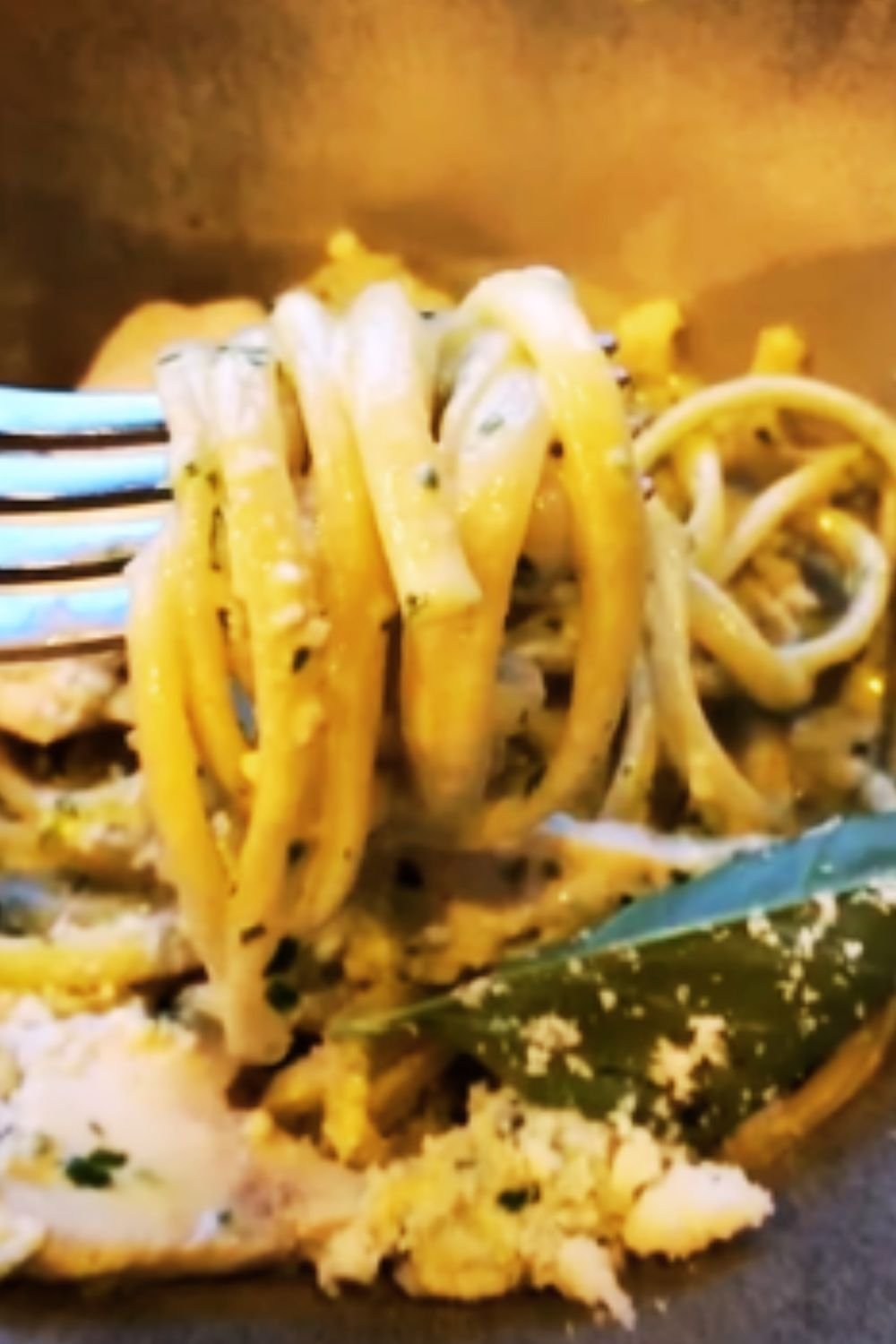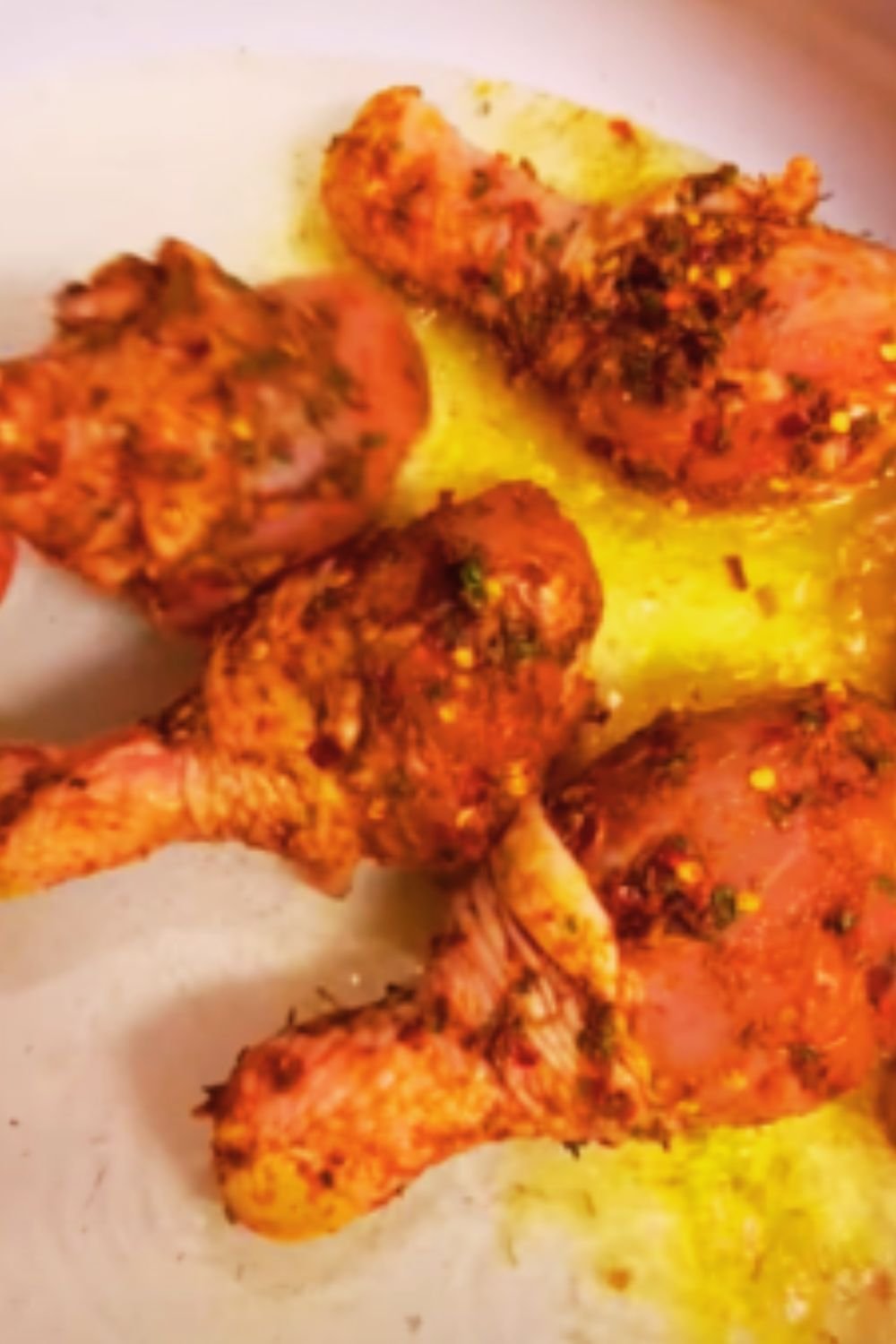There’s something magical about the combination of tender chicken, vibrant pesto, and sweet roasted tomatoes that never fails to impress. As someone who has prepared this dish countless times for both casual family dinners and special gatherings, I can confidently say that this Creamy Pesto Chicken with Roasted Tomatoes recipe has earned its place in my regular rotation for good reason.
When I first stumbled upon a version of this recipe years ago, I was immediately drawn to its beautiful colors and promise of bright flavors. Over time, I’ve perfected my own approach, balancing the richness of the cream with the herbal punch of homemade pesto and the sweet-tart pop of roasted cherry tomatoes. The result is a dish that feels both sophisticated and comforting—perfect for those evenings when you want something special without spending hours in the kitchen.
In this article, I’ll walk you through my tried-and-true method for creating this Italian-inspired dish. From selecting the perfect chicken breasts to crafting a silky pesto cream sauce that clings beautifully to each bite, I’ve included every detail to ensure your success. Whether you’re a seasoned home cook or just beginning your culinary journey, this recipe offers both accessibility and impressive results.
Ingredients Breakdown
Before we dive into the cooking process, let’s take a closer look at the key ingredients that make this dish shine.
For the Roasted Tomatoes:
- 2 pints (about 4 cups) cherry or grape tomatoes
- 3 tablespoons olive oil
- 4 garlic cloves, thinly sliced
- 1 teaspoon kosher salt
- ½ teaspoon freshly ground black pepper
- 1 teaspoon dried oregano
- ¼ teaspoon red pepper flakes (optional)
For the Chicken:
- 4 boneless, skinless chicken breasts (about 2 pounds)
- 1 teaspoon kosher salt
- ½ teaspoon freshly ground black pepper
- 1 teaspoon garlic powder
- ½ teaspoon dried oregano
- 2 tablespoons olive oil
- 1 tablespoon unsalted butter
For the Creamy Pesto Sauce:
- 1 tablespoon olive oil
- 1 small onion, finely diced
- 3 garlic cloves, minced
- ¼ cup dry white wine (optional, can substitute chicken broth)
- 1 cup heavy cream
- ½ cup prepared pesto (homemade or store-bought)
- ¼ cup grated Parmesan cheese
- 1 tablespoon fresh lemon juice
- Salt and pepper to taste
For Garnish:
- Fresh basil leaves, torn or thinly sliced
- Extra Parmesan cheese for serving
- Toasted pine nuts (optional)
Equipment Needed
To prepare this dish efficiently, gather these kitchen tools:
- Large rimmed baking sheet
- Large skillet (preferably stainless steel or cast iron)
- Meat thermometer
- Sharp knife and cutting board
- Measuring cups and spoons
- Tongs for handling the chicken
- Wooden spoon or silicone spatula
Step-by-Step Instructions
Roasting the Tomatoes
The roasted tomatoes are a cornerstone of this dish, providing bursts of sweet-tart flavor that perfectly complement the creamy sauce.
- Preheat your oven to 425°F (220°C).
- Place the cherry tomatoes on a large rimmed baking sheet.
- Drizzle with olive oil, then add the sliced garlic, salt, pepper, dried oregano, and red pepper flakes if using.
- Toss everything together until the tomatoes are evenly coated.
- Spread the tomatoes in a single layer and roast for 20-25 minutes until they’re blistered and beginning to burst, shaking the pan halfway through.
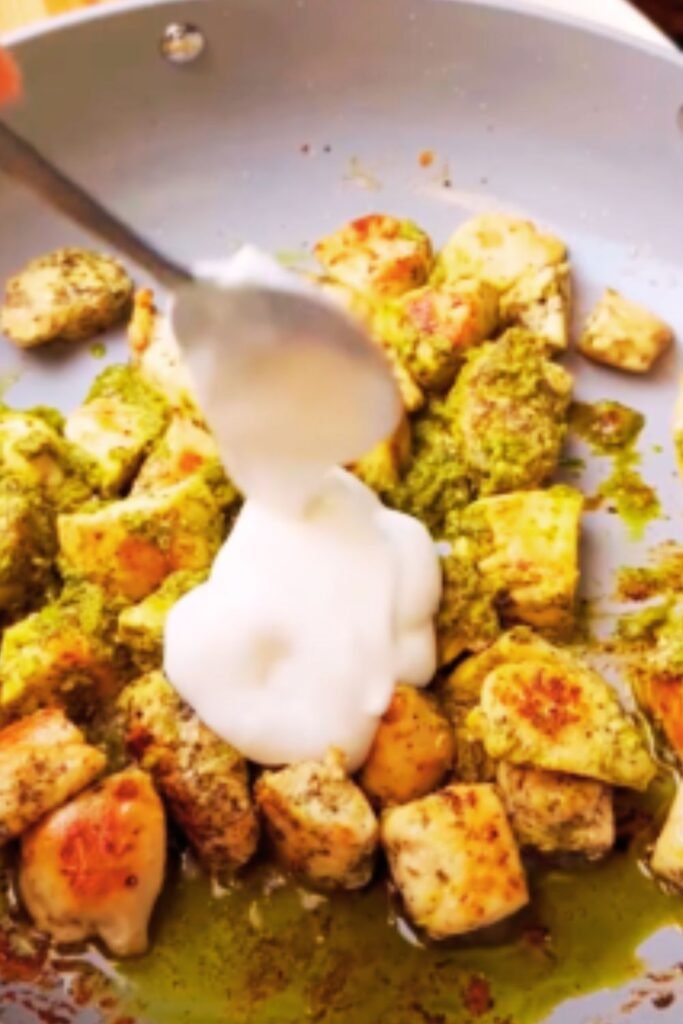
Chef’s Tip: Don’t worry if some tomatoes burst completely while others remain intact—this variety creates an interesting texture in the final dish.
Preparing the Chicken
While the tomatoes are roasting, prepare your chicken:
- Pat the chicken breasts dry with paper towels. This step is crucial for achieving a good sear.
- If the chicken breasts are very thick, consider slicing them horizontally to create thinner cutlets, or pound them to an even thickness of about ¾ inch.
- In a small bowl, combine the salt, pepper, garlic powder, and dried oregano.
- Season both sides of the chicken breasts with this mixture, pressing gently to adhere.
- Heat the olive oil and butter in a large skillet over medium-high heat until the butter is melted and bubbling.
- Add the chicken breasts to the pan, being careful not to overcrowd (work in batches if necessary).
- Cook for 5-7 minutes on the first side until golden brown.
- Flip and cook for another 5-6 minutes on the second side, or until the internal temperature reaches 165°F (74°C) on an instant-read thermometer.
- Transfer the cooked chicken to a plate and tent loosely with foil to keep warm.
Chef’s Tip: Resist the urge to move the chicken around while it’s cooking. Letting it develop a good sear undisturbed will create more flavor and help prevent sticking.
Creating the Creamy Pesto Sauce
Now for the crowning glory—a silky, herbaceous sauce that ties everything together:
- In the same skillet used for the chicken (don’t clean it!), heat 1 tablespoon of olive oil over medium heat.
- Add the diced onion and cook for 3-4 minutes until softened and translucent.
- Add the minced garlic and cook for another 30-60 seconds until fragrant, being careful not to burn it.
- If using, add the white wine to deglaze the pan, scraping up any browned bits from the bottom. Let it simmer for 1-2 minutes until slightly reduced.
- Reduce the heat to medium-low and pour in the heavy cream, stirring constantly.
- Once the cream begins to simmer, add the pesto and stir to combine.
- Sprinkle in the Parmesan cheese and stir until melted and incorporated.
- Add the lemon juice and stir to combine.
- Taste the sauce and adjust seasonings with salt and pepper as needed.
- Let the sauce simmer gently for 2-3 minutes to thicken slightly.
Chef’s Tip: The sauce should coat the back of a spoon but still flow freely. If it becomes too thick, thin it with a splash of chicken broth or pasta water if serving with pasta.
Bringing It All Together
- Return the chicken to the skillet, nestling it into the sauce.
- Spoon some of the sauce over the chicken breasts.
- Add about three-quarters of the roasted tomatoes to the skillet, gently stirring them into the sauce around the chicken.
- Allow everything to simmer together for 2-3 minutes to warm through and let the flavors meld.
- Garnish with the remaining roasted tomatoes, fresh basil, additional Parmesan, and toasted pine nuts if desired.
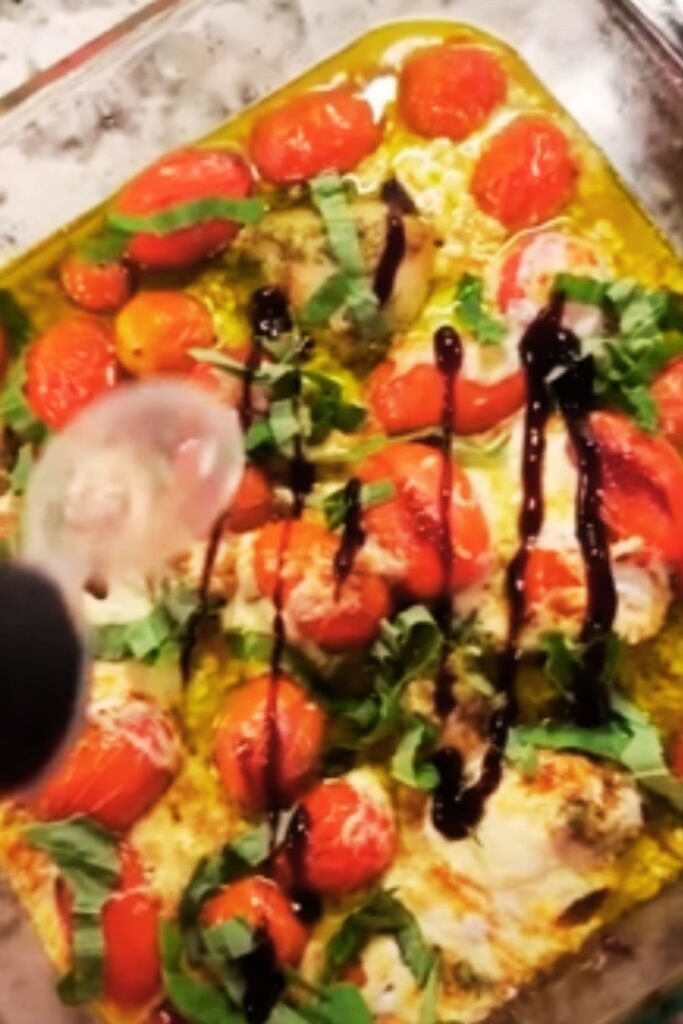
Nutritional Information
For those keeping an eye on their nutritional intake, here’s a breakdown of this dish per serving (based on one chicken breast with sauce and tomatoes):
| Nutrient | Amount per Serving |
|---|---|
| Calories | 640 |
| Protein | 43g |
| Carbohydrates | 12g |
| Fat | 48g |
| Saturated Fat | 18g |
| Cholesterol | 175mg |
| Sodium | 910mg |
| Fiber | 3g |
| Sugar | 6g |
| Vitamin A | 30% DV |
| Vitamin C | 45% DV |
| Calcium | 20% DV |
| Iron | 15% DV |
Note: Nutritional values are approximate and may vary based on specific ingredients used.
Serving Suggestions
This versatile dish pairs beautifully with a variety of sides. Here are my favorite ways to serve it:
Starchy Sides:
- Creamy polenta or risotto to soak up the delicious sauce
- Al dente pasta such as linguine or fettuccine
- Crusty artisan bread for mopping up every last bit of sauce
- Fluffy mashed potatoes or mashed cauliflower for a lower-carb option
- Herbed rice pilaf
Vegetable Accompaniments:
- Sautéed spinach with garlic
- Steamed asparagus with lemon zest
- Roasted zucchini and bell peppers
- Simple arugula salad with lemon vinaigrette
- Sautéed green beans with sliced almonds
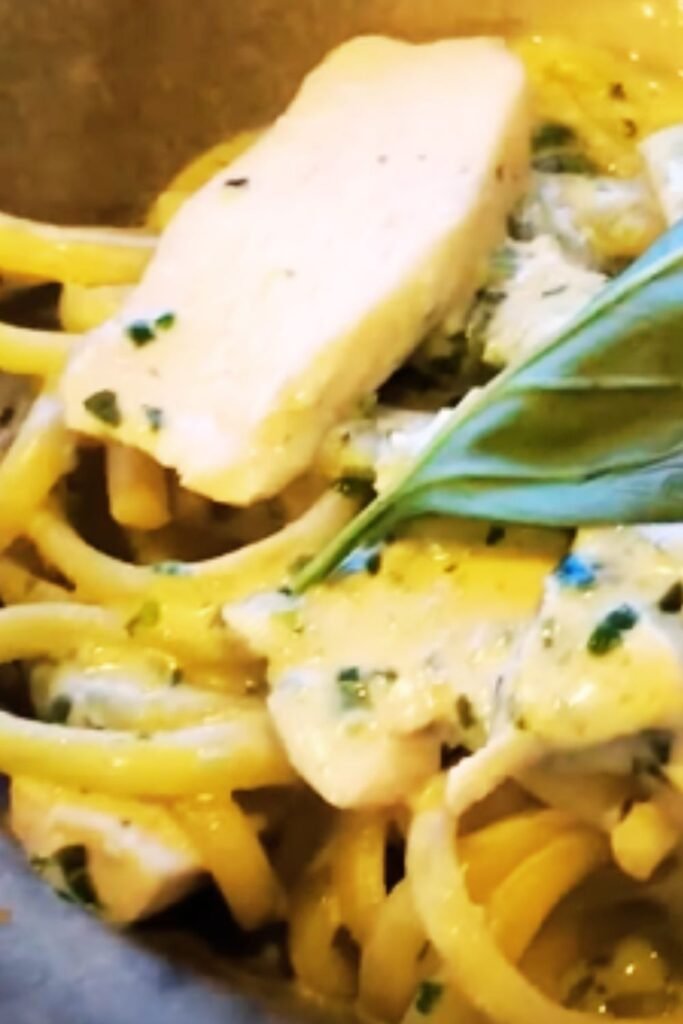
Make-Ahead and Storage Tips
One of the reasons I love this recipe is how well it works for meal prep and leftovers:
Make-Ahead Options:
- Roast the tomatoes up to 3 days in advance and store them in an airtight container in the refrigerator.
- Make homemade pesto up to a week ahead and store it in the refrigerator with a thin layer of olive oil on top to prevent browning.
- Season the chicken breasts up to 24 hours in advance; keep them covered in the refrigerator.
Storage Instructions:
- Refrigerate leftovers in an airtight container for up to 3 days.
- The sauce may thicken considerably when chilled. When reheating, add a splash of chicken broth or cream to reach desired consistency.
Reheating Recommendations:
- For best results, reheat gently on the stovetop over medium-low heat.
- If using a microwave, heat at 70% power in 30-second intervals, stirring between each interval to ensure even heating.
- Add a splash of liquid (broth, water, or cream) if the sauce has thickened too much.
Variations to Try
While the classic version of this recipe is delightful, don’t be afraid to experiment with these tasty variations:
Protein Swaps:
- Use boneless chicken thighs for more flavor and moisture
- Substitute Italian sausage for a heartier version
- Try it with shrimp or scallops for an elegant seafood twist (reduce cooking time accordingly)
- Make it vegetarian with pan-seared tofu or roasted cauliflower steaks
Pesto Variations:
- Sun-dried tomato pesto for an extra layer of tomato flavor
- Arugula pesto for a peppery kick
- Spinach and walnut pesto as a budget-friendly alternative
- Red pepper pesto for a slightly spicy variation
Additional Mix-ins:
- Add sliced mushrooms to the sauce
- Incorporate diced roasted red peppers
- Stir in baby spinach just before serving to wilt in the warm sauce
- Mix in artichoke hearts for Mediterranean flair
Common Pitfalls and How to Avoid Them
Even experienced cooks can encounter challenges with this recipe. Here are solutions to potential issues:
| Problem | Cause | Solution |
|---|---|---|
| Tough chicken | Overcooked chicken | Use a meat thermometer and remove chicken at 165°F exactly; allow it to rest before slicing |
| Curdled sauce | Heat too high or adding cold ingredients to hot cream | Keep sauce at a gentle simmer; bring refrigerated ingredients closer to room temperature before adding |
| Bland flavors | Inadequate seasoning or low-quality ingredients | Season at each step of cooking; use the best quality pesto you can find or make your own |
| Watery sauce | Not reducing properly or watery pesto | Simmer sauce until properly thickened; strain excess liquid from pesto if necessary |
| Broken sauce | Overheating or adding acids too quickly | Keep sauce at a gentle simmer; add lemon juice gradually at the end |
| Burnt garlic | High heat when adding garlic | Add garlic after onions have softened and reduce heat slightly |
Recipe FAQ
Q: Can I use bone-in chicken for this recipe?
A: Yes, bone-in chicken thighs or breasts work beautifully but require longer cooking times. I recommend searing them in the skillet first, then transferring to a 375°F oven to finish cooking until they reach 165°F internally, about 20-25 minutes depending on size. Make the sauce separately and combine before serving.
Q: Is there a dairy-free alternative for this recipe?
A: Absolutely! You can substitute the heavy cream with full-fat coconut milk or cashew cream, and use a dairy-free pesto. The flavor profile will change slightly, but it will still be delicious. Just be aware that coconut milk may add a subtle coconut flavor.
Q: Can I make this recipe lower in calories?
A: Yes, try these modifications: use chicken breast cutlets to reduce portion size, substitute half-and-half for heavy cream, reduce the amount of oil used throughout, and serve with vegetables instead of pasta or bread. These changes could reduce the calorie count by approximately 150-200 calories per serving.
Q: My pesto turned brown in the sauce. What happened?
A: Fresh basil in pesto oxidizes when heated. To maintain a vibrant green color, you can: 1) stir in the pesto off the heat, 2) reserve a tablespoon of fresh pesto to swirl on top just before serving, or 3) blanch basil leaves in boiling water for 5 seconds, then ice water, before making your pesto.
Q: The chicken always sticks to my pan. What am I doing wrong?
A: Three common issues: 1) Your pan isn’t hot enough before adding the chicken, 2) You’re trying to flip the chicken too soon—it should release easily when properly seared, or 3) Your pan needs more oil. Make sure your pan is properly preheated, use enough oil, and be patient before flipping.
Q: Can I freeze this dish?
A: Yes, but with some caveats. Cream-based sauces can sometimes separate when frozen and thawed. For best results, freeze the cooked chicken separately from the sauce. When reheating, thaw in the refrigerator overnight, then gently reheat the chicken with fresh sauce. The roasted tomatoes can be frozen separately and added when serving.
Why This Recipe Works
As I’ve refined this recipe over the years, I’ve discovered several key principles that make it consistently successful:
- Building layers of flavor: By seasoning at each step and using flavorful ingredients like roasted tomatoes and homemade pesto, every bite delivers depth and complexity.
- Creating textural contrast: The combination of tender chicken, silky sauce, and bursting tomatoes provides a satisfying variety of textures.
- Balancing richness with acidity: The heavy cream and cheese are balanced perfectly by the brightness of lemon juice and tomatoes.
- Incorporating techniques that develop flavor: Both searing the chicken and roasting the tomatoes create caramelization that adds significant flavor complexity.
- Utilizing the same pan: By cooking the sauce in the same pan used for the chicken, you capture all those flavorful browned bits (fond) that would otherwise be lost.
Final Thoughts
This Creamy Pesto Chicken with Roasted Tomatoes has become one of my signature dishes for good reason. It strikes that perfect balance between impressive and approachable, making it suitable for both weeknight dinners and special occasions. The vibrant colors, comforting textures, and bold Italian-inspired flavors never fail to bring smiles to the table.
What I particularly love about this recipe is its adaptability. You can easily scale it up for a crowd, adjust components based on what’s in your pantry, or customize it to suit dietary preferences. It’s the kind of cooking that encourages creativity while providing a reliable framework for success.
I hope you’ll give this recipe a try and perhaps even make it your own with personal touches. Food is most meaningful when it’s shared, adapted, and woven into our stories—and this dish has certainly become an important chapter in mine.
